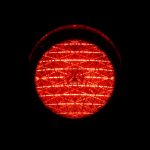New Rules for Disqualified Driving

On 14 August, NSW attorney general Mark Speakman announced a suite of new reforms to driver licence disqualification laws. The changes, that will begin operation in late October, include pathways for driving whilst disqualified drivers to apply for their licence to be reinstated at an earlier stage.
The minister said the amendments are designed to “rebalance the system in favour of people who prove they can steer their lives back on track, while providing police with extra on-the-spot powers to punish repeat disqualified driving offenders.”
The changes are based on the recommendations of the Legislative Assembly Committee on Law and Safety inquiry into driver licence disqualification reform. The inquiry tabled its report in June 2014.
The committee’s recommendations were intended to ensure that offenders receive penalties and disqualification periods that are better tailored to each case, and to encourage them to be on good behaviour during their disqualification periods.
Longer periods are no deterrence
Licence disqualification can have a devastating effect on a person’s life.
This is especially true for people who live in regional and rural areas, where there’s no public transport. It can impact on their ability to maintain employment, and access education and healthcare services.
Disqualification periods can be lengthy – many in the community are disqualified for decades with little hope in getting their licences back. Disqualifications disproportionately affect disadvantaged sectors of society, including Aboriginal and Torres Strait Islanders people. They’ve also been shown to be very ineffective in deterring unauthorised driving.
A 2007 NSW Bureau of Crime Statistics and Research report found no evidence to suggest longer disqualification periods reduced reoffending. In relation to speeding offences, longer prohibition periods actually increased the risk of subsequent offending.
It appears the NSW government is finally applying this rationale to their new reforms, whilst making it easier for police to remove repeat offenders from the road.
Getting that licence back
Under the proposed changes, certain disqualified drivers will have the right to apply to the Local Court to have their bans lifted earlier if they’ve demonstrated a commitment to lawful behaviour and complied with their disqualification period for a minimum of 2 or 4 years.
Eligibility will depend on the circumstances of an individual’s case. However, it will not apply to disqualified drivers who have had their licences revoked for driving offences occasioning death or grievous bodily harm.
Community safety will be the major consideration when the court determines whether to return an individual’s driver licence. Drivers who have their disqualification lifted will still have to apply to Roads and Maritime Services (RMS), and complete road safety and knowledge tests to get their licences back.
This measure is designed to encourage drivers to comply with their period of disqualification, so they can more quickly return to the road. In turn, it is hoped this will lower reoffending rates, as the shorter the period of disqualification, the less likely a person will be tempted to drive unlawfully.
Revised and reduced penalties
Maximum penalties for unauthorised driving offences will be revised to make them more proportionate to other driving offences.
Repeat unauthorised driving offences currently carry maximum penalties that are in line with very serious offences such as high risk drink driving.
Unauthorised driving offences include driving whilst a person’s licence has been disqualified, cancelled or suspended, as well as where an individual has never been issued with a driver licence.
It’s estimated that up to 75 percent of disqualified and suspended drivers continue to drive unlawfully.
The difference between disqualification and suspension of a licence is that the penalty of disqualification is imposed by the court, whilst a licence can be suspended by NSW police or the RMS.
Under the new scheme, if a person is convicted of driving whilst disqualified, the automatic disqualification period will be 6 months. This disqualification period can be varied by the court – depending on the case – and the minimum period that can be imposed for is 3 months.
Both these penalties have been reduced from the current minimum of 12 months.
Automatic and minimum disqualification periods will vary by offence, and increase with second and subsequent offences. Multiple disqualifications for driving without a licence will run concurrently, unless when ordered otherwise by the court.
The end of the habitual traffic offender
The new rules will see an end to habitual offender declarations.
Under the current Habitual Traffic Offender Scheme, a person is declared an habitual offender if the court find them guilty of three relevant serious driving offences within a 5 year period. Where a declaration is made, the RMS slaps a further 5 year ban on a driver for the third offence and each latter offence.
This can lead to extremely lengthy disqualification periods, and occasionally lifetime bans. The abolition of this scheme is a further acknowledgement that longer disqualifications don’t stop unlawful driving, and can actually increase the risk of reoffending.
Expanding police powers
Under the new system, police officers will have increased powers to enable on-the-spot confiscation of number plates or vehicles belonging to offenders who continue to drive whilst unlicensed or disqualified.
NSW police officers will be able to impose longer on-the-spot confiscation periods of 6 months for repeat offenders who have two or more prior convictions for certain driving offences over the last 5 years. Currently, impoundment periods can be up to 3 months.
The offences where this can be applied include unauthorised driving, as well as applying for a licence without mentioning driver disqualification, or when an individual states their name incorrectly on a driver licence application form.
The changes will also allow for vehicles to be impounded for up to three months when a disqualified driver is found to be exceeding the speed limit by more than 30 kilometres per hour.
Long time coming
So it appears that NSW drivers are finally going to see evidence-based changes to the state’s driver licence disqualification regime. And now drivers will be able to serve more reasonable disqualification periods.
Let’s hope the authorities start to apply this kind of thinking when it comes to issuing prison sentences, as it’s been shown that non-custodial sentences can be a much more effective way in reducing reoffending, whilst saving taxpayers’ dollars.
Going to court for a traffic offence?
If you are going to court for a traffic offence, call or email Sydney Criminal Lawyers anytime to arrange a free first consultation with an experienced, specialist traffic lawyer who will accurately advise you of your options, the best way forward, and fight for the optimal outcome in your specific situation.








